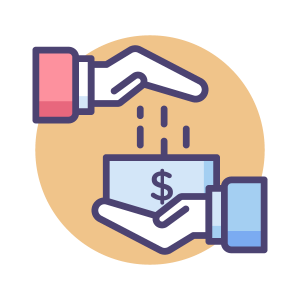Student loans are confusing to navigate because details differ between federal and private loans. Also, many students may be overwhelmed with what they have to pay for in college. These things include: tuition, room and board, books and computers. Today’s students are graduating with higher amounts of debt, and mistakes in the student loan process lead to more financial troubles. The experts at Communityforce have made this list of student loan mistakes to keep clear of when it comes to student loans:
Not monitoring debt throughout college
College is expensive and student loans add up fast. The Wall Street Journal reported 2015’s college graduates are leaving with the highest student loan debt ever. The average graduate will have to pay back $35,000 in student loans. It was also reported almost 71 percent of undergraduates will leave school with student loan debt, compared to 64 percent 10 years ago and 36 percent 20 years ago. It is important to organize your financial matters and monitor debt throughout college, because not keeping track of how much you take out results in higher bills after graduation. Organize your loans in a folder or spreadsheet on your computer. This will help reduce errors when examining funds.
Borrowing too much
If you are new to the loan process, it will be beneficial to do some research on what your future career path offers. A good rule of thumb is to not take out more student loan debt than your first year’s salary after college. Be realistic about your first-year salary, consider all the costs of college and try to create an expected payment plan for your future loans. Patricia Christel, vice president of corporate communication for Sallie Mae, said 40 percent of families do not consider cost when picking a college.
“As they make borrowing choices, families should consider the total amount they will need to pay back and how much the student can estimate to make in their chosen career path,” Christel explained to Fox Business.
Not applying for scholarships
Some students believe they can only apply for scholarships when they are a senior in high school or entering college. This is false; many scholarships accept applicants at any grade level. Scholarships are basically free money for students and even the small ones take a chunk out of your student loan debt. What’s better, being awarded a scholarship check for $1,000 or sending a check for $1,000 to your student loan provider?
It is important for students to apply for scholarships throughout their high school careers and not just the spring of their senior year. According to Mark Kantrowitz, senior vice president and publisher at edvisors.com, many students wait until they are almost finished with high school to start applying for scholarships, and by that time they have missed many deadlines for applications.
Not knowing the difference between federal and private loans
Uninformed students might think all loans work the same, but there are many differences between federal and private loans. Repayment of federal loans starts after graduation, while payment options differ with private loans. In fact, some private loans may require payments while you are still in school. The interest on federal loans is sometimes tax deductible, and private loan interest is usually not. Federal loans offer temporary postponement or lower payment options, but many private student loans do not offer these options for graduates struggling to make payments.
The interest for federal student loans is fixed, and interest on private loans fluctuates. Currently, interest on direct subsidized and unsubsidized loans for undergraduate students is fixed at 4.29 percent. Direct unsubsidized loans for graduate or professional students is fixed at a 5.84 percent rate, and direct PLUS loans are fixed at 6.84 percent.
Using loans to cover other expenses
Some students may take out a loan larger than their tuition in order to pay for rent, groceries or other college expenses, but using a loan to pay for these things leads to higher expenses. This is because a loan charges interest whether it is being used to fund your education or buy food. You can pay for these things without loans by getting a part-time job while in school. Your job can help cover living expenses and assist you in avoiding additional loan interest.
A great alternative to taking out student loans is finding and applying for scholarships. To find scholarship opportunities, visit Communityforce website!












